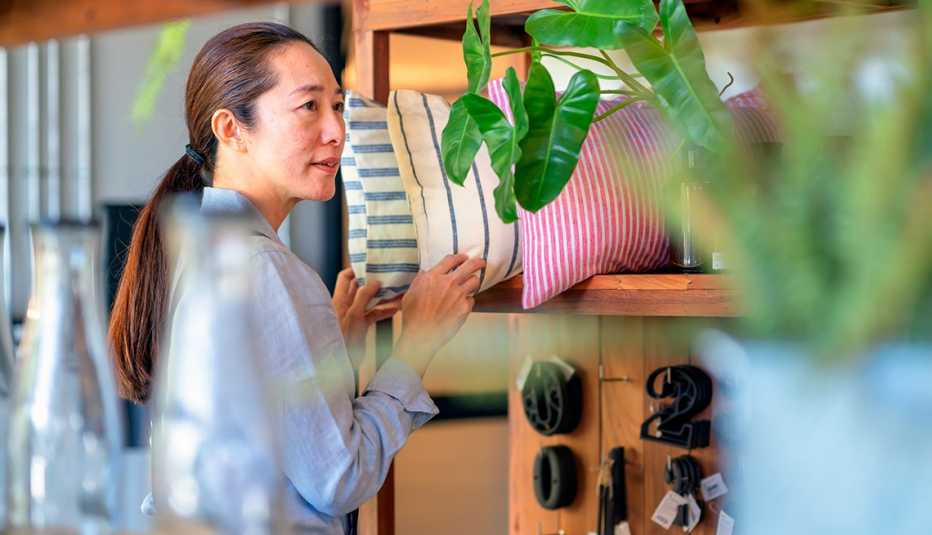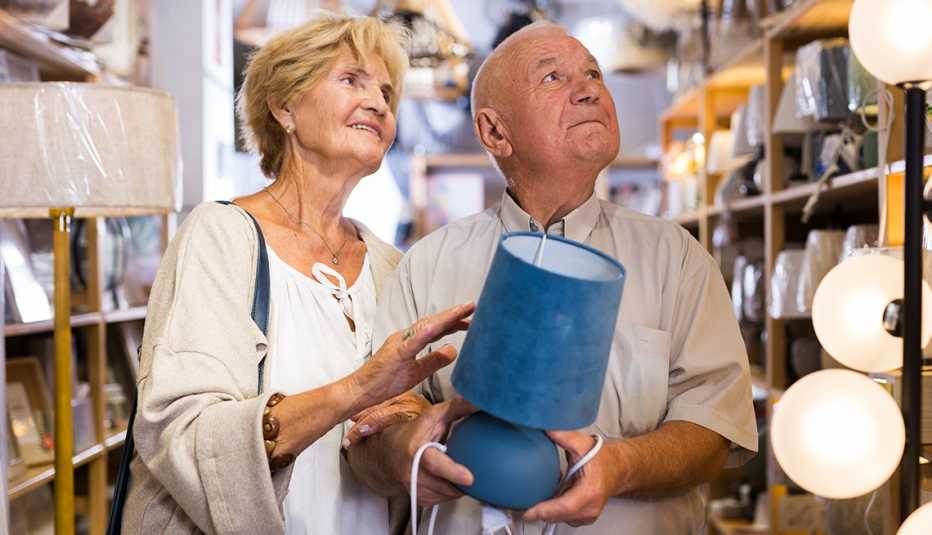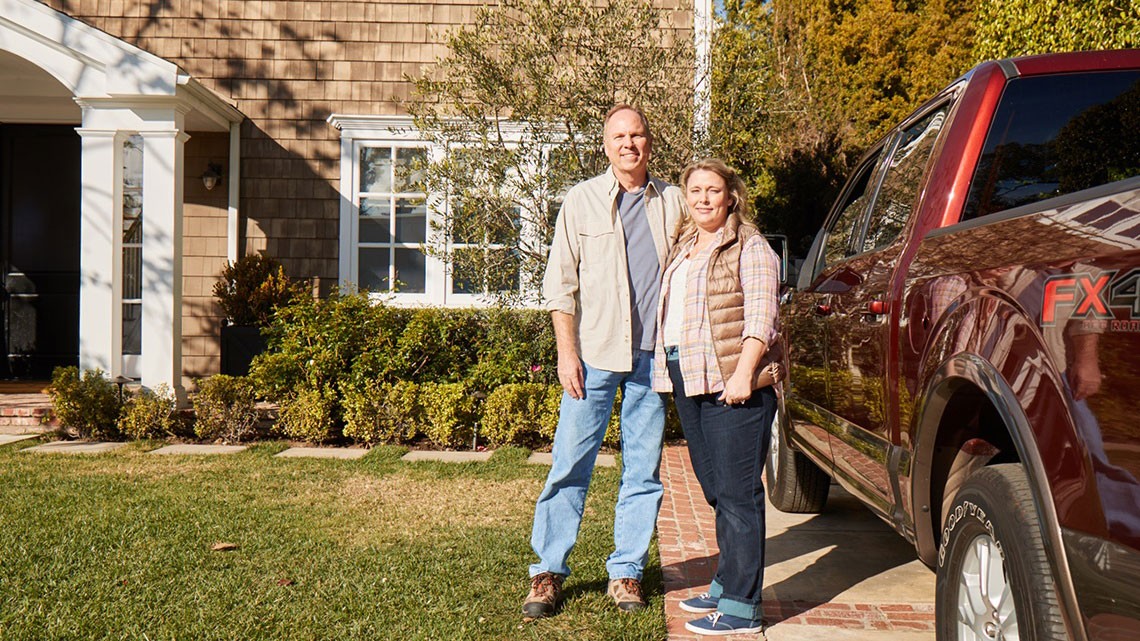Staying Fit


Rugs a little ratty? Throw pillows pilling? Bedding that says ick instead of ahhhh? There are smart ways to style up your décor without breaking the bank. A good place to start: discount home goods stores.
You can shop for stylish items at the big-name retail outlets — think HomeGoods, T.J.Maxx, Marshalls, etc. — without making a large investment, says Karen Otto, chief staging officer for Home Star Staging in Plano, Texas, who redecorates homes for sale to increase their appeal.


AARP Membership— $12 for your first year when you sign up for Automatic Renewal
Get instant access to members-only products and hundreds of discounts, a free second membership, and a subscription to AARP the Magazine.
Although there are plenty of cheap prices at discount home goods stores, a mix of high- and low-quality items means not everything is a bargain.
How do you figure out when it’s worth opening your wallet and what’s best left on the shelf? We asked interior designers and home stagers what they look for when shopping for top-notch items on the cheap.


Lamps that light up your life — and won’t wobble or crack
You can instantly and inexpensively update a room with new lamps. But before you buy, take a minute to evaluate their construction, says Artem Kropovinsky, founder of Arsight, an interior design studio in New York City.
Make sure a lamp is sturdy with a solid switch and a securely attached cord, Kropovinsky says. If any part of a lamp seems loose or wobbly, he says, it’s not worth it, whatever the cost.
That goes for the lampshade too, he adds. It needs to be “well-stitched and made of durable material to withstand heat from the bulb.”
Steer clear of lampshades with glue drippings or plastic liners that have chips or dents, says Diana Hathaway, founder of the interior design firm GorgeousColor.com in San Francisco.
If you absolutely love a lamp base, but the shade is poorly made or damaged, you can always purchase a shade separately, Hathaway says. Just be sure that it is a third of the base’s height and covers the electrical elements, says Debbe Daley of Debbe Daley Designs.
Pro styling tip: “Budget lamps look more expensive in muted colors and natural materials like wrought iron, wood, linen, glass or rattan,” says Vannessa Rhoades, founder of Three Bears Home Staging in Katy, Texas, and the author of Just Right! Easy DIY Home Staging.
Look closely at the finish, Hathaway adds. Metal that’s been painted to look distressed or aged can look cheap in your home when surrounded by higher-quality furnishings. Opt for a solid color instead.


Rugs that refresh your room — and won’t curl or fray
Rugs can transform any room by adding new colors and patterns, Hathaway says, but you want to inspect the quality before you roll it up and take it home.
First thing: Check the corners. Though it can be hard to get a complete look at a rug in a home store, Hathaway says, the corners of a rug tell you if it’s very lightweight and prone to curling or wrinkling.
A rug’s binding can be another good giveaway when it comes to quality, Hathaway says. Run your hand along the edge to see if there are spots where it is already unraveling or missing completely. That’s a clue that it’s not well-made.
Density is another way to check a rug’s structural quality. You do that by counting the knots or loops on the back of the rug — the higher the number of knots, the better the quality because the rug will be stronger, Kropovinsky says. Decent rugs should have 150 knots per square inch.
Look carefully at the fibers or strands of the carpet; they should be thick and plush.
“If you can see a backing through them, it’s a cheap rug, and when it mats down, it will not look great,” says Lisa M. Cini, president of Mosaic Design Studio in Columbus, Ohio. “Look for a good edge binding that won’t pull off and check for shedding; if it’s shedding now, it will continue to shed.”
Pro styling tip: Be sure to buy a good-quality rug pad, which can enhance the look of an inexpensive rug that lacks weight while guarding against wear, Hathaway says.




































































More From AARP
14 Bathroom Updates for Now and Later as You Age in Place
Bathrooms present a high risk of falls and need special attention7 Essential Home Staging Tricks the Pros Use
When selling, make spaces more appealing to buyers
5 Affordable Home Design Trends for a Fresh Look
Consider new styles of wallpaper, furniture and texture